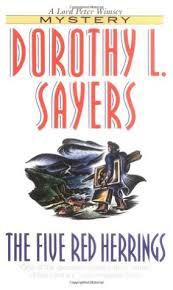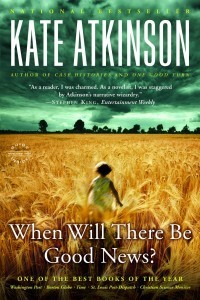Lea Wait's Blog, page 264
April 3, 2016
When a (Writing) Retreat is a Step Forward
 Lea Wait here. Many of you know this has been a challenging winter for my husband and for me. As I’m writing this he is in the hospital having two stents put in his left leg. He’s been there a week, and has another couple of days to go before he can come home. This is his third hospitalization since mid-January. And I had kidney surgery last week — and will have it again this Friday.
Lea Wait here. Many of you know this has been a challenging winter for my husband and for me. As I’m writing this he is in the hospital having two stents put in his left leg. He’s been there a week, and has another couple of days to go before he can come home. This is his third hospitalization since mid-January. And I had kidney surgery last week — and will have it again this Friday.
Of course, our top priority has been taking care of each other and our health issues. But the reality of art galleries expecting new paintings from Bob, and my next mystery due to Kensington on May first, in a year when mystery authors are being dropped left and right, has meant we can’t divest our artistic obligations.
It hasn’t been easy. I was especially worried since I sent my previous book in at the end of January, and knew I only had a little over 3 months to complete the next one.
Somehow I wrote about fifty pages. A pittance.

Pics are views from the porch of the home where I was staying.
Bob was doing better, but, even with only two of us at home, after his stroke I’d picked up the cooking and chores he usually did, and was the one organizing doctors’ visits and paying bills. I wasn’t writing. I was beginning to panic.
Once a couple of years ago I had the opportunity to leave home and spend five days alone, doing nothing but writing. It was an incredibly productive week. I have a writing friend who takes herself on solo “retreats” several times a year — checks herself into a hotel in a remote spot and writes. So when Bob and one of our neighbors suggested I take a week away from home I hesitated, but then couldn’t resist.
I left Bob with casseroles and sandwich makings and frozen pizzas and spent 6 1/2 days at the neighbor’s house, semi-closed for the winter, on the edge of the sea. The neighbor made sure the heat was on, a telephone was available, and I had internet access. I brought simple food with me for the week.
And I wrote over 150 pages. A first draft, sure. But not a bad one. I kept in touch with my husband by telephone, and the neighbor stopped in several times. Bob was fine. In fact, he produced two paintings that week.
And my deadline looked within reach.
For anyone else considering such a step, here are a couple of suggestions, based on my experience:
Prepare outlines, character sketches, plot lines — whatever you need — before you go. You’re there to write, not research. Leave blank spaces in your manuscript if you must.
Take food that is easy to prepare and light. You don’t want to fall into a carb stupor. Ditto alcohol. I did take a bottle of sherry and treated myself to a glass at the end of my writing day. (I also took jelly beans!)
Don’t worry about clothes. You won’t be seeing anyone. Comfort is the key — sweats, slippers — whatever is relaxing for the season. (You also won’t need makeup. But I did take bath salts. Working at a keyboard 10+ hours a day is rough on back and shoulder muscles.)
Give yourself a break from your manuscript at night. Watch light tv, or read something in a different genre from the one you write in. You may still find thoughts of plots flickering through your brain, though — make sure you have paper and pencil wherever you are.
If you can, depending on season and weather, take a walk each day. Or at least breathe some fresh air.
Don’t worry about word or page counts when you’re working … just keep going. But keep track, so you can pat yourself on the back as the words add up.
Bottom line: would I do this again? Without a doubt. I felt peaceful, productive, and, best of all, not distracted by issues at home. It worked.
For those of you who can sit at home and write 20-25 pages a day on a regular basis — Bravo! (or Brava!) But I normally produce 5 to 10 pages on a good day. Allowing myself the freedom just to write was a great gift.
And, although life has tumbled around me again, I’m still hoping to get my book in on time.
For me, that almost-one-week retreat was a major step forward. I can hardly wait to do it again. I recommend it to anyone who’s in a tough writing space.
P.S. If any of you are interested in duplicating my retreat, the home I stayed at belongs to Barbara and JD Neeson. It’s in Spruce Head, Maine, and is isolated — no other homes around – rustic, built in 1905, with 5 bedrooms + 2 baths — and books and art everywhere! To find out more, check with them at bneeson@live.com (They said I could post that!)
Lea Wait writes the Mainely Needlepoint series (the most recent of which is Thread and Gone) and the Shadows Antique Print Mystery series (the most recent of which is Shadows on a Maine Christmas.) New books in each series will be published later this year. Lea also writes historical novels set in 19th century Maine. http://www.leawait.com
April 1, 2016
Weekend Update: April 2-3, 2016
 Next week at Maine Crime Writers there will be posts by Lea Wait (Monday), Kathy Lynn Emerson/Kaitlyn Dunnett (Tuesday), Dorothy Cannell (Wednesday), Susan Vaughan (Thursday), and Bruce Coffin (Friday).
Next week at Maine Crime Writers there will be posts by Lea Wait (Monday), Kathy Lynn Emerson/Kaitlyn Dunnett (Tuesday), Dorothy Cannell (Wednesday), Susan Vaughan (Thursday), and Bruce Coffin (Friday).
An invitation to readers of this blog: Do you have news relating to Maine, Crime, or Writing? We’d love to hear from you. Just comment below to share.
And a reminder: If your library, school, or organization is looking for a speaker, we are often available to talk about the writing process, research, where we get our ideas, and other mysteries of the business. Contact Kate Flora: mailto: kateflora@gmail.com
March 31, 2016
April Fools Day is about as fun as dog poop fudge
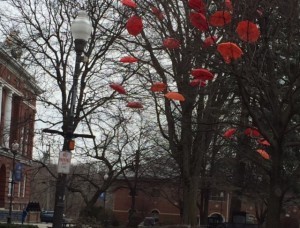
These umbrellas in the tree in Waterville are my kind of April Fools “trick.” Whimsical and realistic and no one gets hurt.
By Maureen Milliken
I’m not a fan of April Fools Day. I don’t know if that puts me in the minority or not.
I’ve never liked pranks or jokes that make people look stupid. I also — and this is weird for a mystery fiction writer to say, I know — don’t like things presented as real that aren’t. So those April Fool’s Day spoofs — fake news reports, people who pretend they’re Oprah calling to say she’s picked your book for her show, Candid Camera-type substituting dog poop for the plate of fudge — irritate me.
I’m not sure if that’s because I’m a journalist, or I became a journalist because I prefer grim reality.
I don’t like to read or watch much related to sci-fi, fantasy, time travel, unicorns, supernatural powers, parallel universes (except that one episode of Lost in Space, because evil Don West was kind of sexy), zombies, vampires, wizards, superpowers…well, you get it.
I’d rather watch a well-done documentary about a real-life crime than a movie about a real-life crime. Really good movies about real crimes — Zodiac, In Cold Blood — I love. But I like documentaries more than a movie about something that really happened. Documentaries with re-enactments? Not so much.
That said, I love mystery fiction. I know it’s not reality. I know there are elements of mystery fiction, like the amount of murders in a small town or the newspaper editor helping to solve those murders and being in life-threatening situations, are not reflections of reality.
I love writing mysteries, particularly dealing with my characters and what happens to them. But this whole week as I “finished” my mystery novel No News is Bad News, that little voice in my head kept saying “Are people really going to buy into this is happening after what happened in the last book?”
No News is Bad News is the second in the Bernie O’Dea mystery series. Bernie (short for Bernadette) is the 40-something editor of a weekly newspaper in Franklin County, Maine. She has no mad self-defense skills, doesn’t like guns and can’t shoot one well when she is forced to, isn’t a genius in any way shape or form. So she’s more or less “normal.”
Somehow, though, she and the police chief get in these situations…
So that voice that hates non-reality, pranks, unicorns, dog poop fudge and all that other stuff said to me as I joyfully killed people and did all sorts of mean and nasty stuff to my characters, “Really?”
I attributed that voice to plot-tweak overload (a blog subject for another day) and kept writing.
On top of all that is the realization, never more clear than when you’re trying to make a plot work, that everything has to be tied up and explained. What can be less like real life than that?
As a journalist, that’s another thing that’s clear every day. No one will ever really know just what happened to Kim Hill, for instance, the woman who fell/jumped/whatever out of the cab of her boyfriend’s pickup truck on U.S. Route 201 at 2 a.m. on a Sunday a couple weeks ago. Missing Waterville toddler Ayla Reynolds? What would have been her 6th birthday is April 4 and police are no closer to finding out what happened to her than they were when se was reporting missing December 17, 2011.
So, in a mystery series, you can kill off more people in a town than the entire state of Maine does in a year, you can rain all kinds of havoc down on the heads of your “normal” protagonists, mysterious strangers can do all sorts of nefarious things, but you damn well better explain it.
In No News is Bad News I try to play a little with perception versus reality, with what happens when perception and reality clash and how questions get answered in light of that. Don’t worry, I know that makes it seem like something they made you read in college Comparative Literature, but it’s not nearly as heavy as it sounds.
Still, it was a fine line to walk. If there are questions that remain, the possible answers still have to satisfy readers.
I understand that, because even though I am not entertained by all the stuff listed above (no I won’t indulge my need to write dog poop fudge one more time), I rarely question the body count, broken bones, mysterious strangers, or anything else in mystery series. I just enjoy the ride.
Writers will tell you — at least ones who writer the way I do — that writing is a wild ride and you never know where it’s going to take you.
If readers have half as much fun reading my first two books as I did writing, I’ll consider it a triumph and try not to worry too much about the horrific twists and turns of book number three. And that’s no joke.
Maureen Milliken is the author of Cold Hard News, released in 2015, and No News is Bad News, due to be released this summer, the first two books in the Bernie O’Dea mystery series. Follow her on Twitter: @mmilliken47 or on Facebook at Maureen Milliken mysteries. Sign up for email updates at maureenmilliken.com. Maureen will be at the Lithgow Library in Augusta, Maine, 1-3 p.m., April 14 as part of a Sisters in Crime New England Speakers Bureau panel speaking on “The Modern Heroin.” On April 27, from 6-8 p.m., she will speak at the Belgrade Public Libary, Belgrade, Maine, on “Journalism and Writing.”
March 30, 2016
We’re Not Just About Moose and Lobsters, Ya Know
 From time to time, the Maine Crime Writers do a group post. This one builds on that children’s game where you’re going on a trip and bringing along X, Y, and Z. So, everyone was asked to answer this question:
From time to time, the Maine Crime Writers do a group post. This one builds on that children’s game where you’re going on a trip and bringing along X, Y, and Z. So, everyone was asked to answer this question:
I am packing a basket full of goodies from Maine, and I am putting “X” in it.
Kate Flora: I am putting in Raye’s mustard, Ducktrap smoked trout, and Stonewall  Kitchen pancake mix. http://www.stonewallkitchen.com
Kitchen pancake mix. http://www.stonewallkitchen.com
Bruce Coffin: A six-pack of Moxie and some venison jerky!
Chris Holm: Gunpowder Rye from New England Distilling and some infusion kits from Vena’s Fizz House.
http://www.newenglanddistilling.com/spirits/rye-whiskey/ http://shop.venasfizzhouse.com/collections/infusion-kits
Maureen Milliken: Claudia Diller Maine scenes calendar and Carrabassett Coffee http://www.carrabassettcoffee.com
 Kathy Lynn Emerson: A jar of Pemberton’s Death by Chocolate, a whoopie pie from Wicked Whoopies www.wickedwhoopies.com and a half pint of Maine maple syrup from any local producer
Kathy Lynn Emerson: A jar of Pemberton’s Death by Chocolate, a whoopie pie from Wicked Whoopies www.wickedwhoopies.com and a half pint of Maine maple syrup from any local producer
Susan Vaughan: Bixby Chocolate Bars and Rock City Coffee, made in Rockland http://www.bixbyco.com
Lea Wait: Blueberry Jam from Stonewall kitchen! Cranberry Gin from Sweetgrass Farm! Whoopie Pie! And a barley sugar lobster lollypop. (Or gummy lobsters – my grandkids’ favorite!)
Brenda Buchanan: A gift certificate good for a couple of growlers of fine beer from Marshall Wharf Brewing in Belfast along with the never-gets-old collection of essays by E.B. White titled One Man’s Meat. (Food for the soul.) http://www.marshallwharf.com
DRINK MAINE BEER!
John Clark: Gift cards from Casablanca Comics and Bullmoose. Two great Maine  operations. Rick at Casablanca is the guru of Manga for the Maine Library community and Bullmoose offers great service and the stores are lots of fun to browse.
operations. Rick at Casablanca is the guru of Manga for the Maine Library community and Bullmoose offers great service and the stores are lots of fun to browse.
Barbara Ross: Coastal Maine Popcorn–both savory and sweet– www.coastalmainepopcorn.com
And lest you think we live on nothing but gourmet treats and Maine roasted coffee, Vaughn Hardacker reminds us of some more down to earth Maine eats: How about the most popular lunch in THE COUNTY! Red hotdogs, burnt black, and Humpty Dumpty BBQ potato chips
Dying to get your hands on some of these treats? Well one lucky commenter during the  month of April will be getting a gift basket with Maine treats and Maine reads, including some Loughlin’s Irish Steak Sauce http://loughlinirish.com
month of April will be getting a gift basket with Maine treats and Maine reads, including some Loughlin’s Irish Steak Sauce http://loughlinirish.com
So keep those comments coming, folks.
And stay tuned for the fun we’re planning for National Library Week, April 10-16. Last year it was library card socks. This year? Well, we’re not telling until April 10th.
Written with Permission
Bruce Robert Coffin here, introducing a debut guest blogger to Maine Crime Writers. Peter Murray is a friend, fellow retired cop, and fellow writer (although he cringes each time I call him that). Pete is also a tremendously talented chef. As he will tell you, the art of cuisine shares much with the art of writing. Pete sent me the following blog which I will now share with you. It made me smile and made me hungry. Bon appetite!
Written with Permission
I wanted to start my writing day by making a couple of observations. Well, I have already made them, but I am about to write them down so that I can remember them in time of need. The first significant thing that happened this weekend is that my wife went away. That cuts both ways. I miss her, and the house seems empty despite my mother-in-law, two dogs, and three cats, all of whom demand that I feed them. But feeding them, particularly mother-in-law, who I call “Visa” because she seems to be everywhere I want to be, has lead to revelations.
The result of my wife’s absence, aside from no distractions of vacuum cleaning, litter box sanitation in my writing space, and interruptions for other domestic intercourse (Not what you’re thinking. I would gladly stop for that) is that I have of necessity moved my writing to the dining room table. This facilitates a watchful eye on Visa and allows me to cook with minimal interruption to my writing.
Inasmuch as I enjoy cooking, and do it professionally, I have often noted that routine of preparation allows a great deal of time being given over to the muse. In a professional setting, which is most often the case, I have neither the time or the indulgence of my employer to stop amid a Hollandaise sauce to jot notes, rewrite sentences, or play around with a herring, be it red or smoked.
When cooking, and thinking about writing, limitations are imposed upon the written word. When writing and cooking those limitations are put in juxtaposition. Momentary synapse collapse is overcome by letting things stew, stirring gently until thickened.
Observation number two: Although that I am, and on various levels at various times always have been, I choke on the phrase, “a writer.” If I do manage to spit it out, I have to overcome the temptation to leap forward mouth wide open and snatch it back like a hungry trout devouring a caddis fly. If I saw at lumber, am I a carpenter?
Save for newspaper articles, several under a pseudonym, reposing in the stack of the historical society, I have produced nothing. The word nothing does not fully describe my state of being. Nothing is nothing, nada, zilch, an empty space. My nothing comes with insecurity, self-doubt and the unshakable feeling that I should get my lazy ass out the door and earn a living. At the very least, I should make something.
Yesterday, writing as described above, I finished a short story. “Damn, I like it,” I said to no one. “No one else will,” someone answered. I put it away to let it percolate, to steep, to let its flavor maturate. It was then that banter (via Facebook of course) turned to gumbo.
The gumbo Kate Flora was cooking of a literary nature. It engender a literal rendition in my kitchen. Amid the chopping of the trinity, the slicing of the andouille and the cooking of the roux, I recalled an article, published only on my blog, that I had written some time back.
Kate to my mind is the queen of Maine Crime Writers, a Katherine the Great in the fiefdom of mystery and suspense. I dared not approach the throne with my treatise on gumbo. Instead, I sent it to Bruce, a friend, fellow law enforcement comrade, and at that moment acting as jester in our Facebook audience with royalty.
It was not my intent for him to publish. I had only sent him the article so that he might glean just how serious the discussion of gumbo can get. There are opinions, dissents, concurrences and joins. The holding and the dicta, require reams. But publish it he did.
Of course, being a man of letters, he could not simply cut and paste. In way of introduction he wrote, “My friend, fellow law dog, and writer.” Our friendship, our brotherhood as former police officers, go beyond a click, a like, and a share. His acknowledging me as a writer has granted me a permission I could not give myself.
March 28, 2016
The Grammy Game
 Every family has inside jokes, stories and strategies for handling the things life throws at you. My family is all from Maine so it’s not surprising that the stories and strategies often involve thrift and ingenuity. The wisdom has been handed down as a sort of verbal inheritance and it pays dividends, often when you wouldn’t expect it.
Every family has inside jokes, stories and strategies for handling the things life throws at you. My family is all from Maine so it’s not surprising that the stories and strategies often involve thrift and ingenuity. The wisdom has been handed down as a sort of verbal inheritance and it pays dividends, often when you wouldn’t expect it.
My maternal grandmother was one of those women, so often found in northern New England, who could make a nickel, or a loaf of bread or a box of laundry soap stretch in ways that can only be described as Biblical. Every single time I think a jar of mayonaise isn’t worth tackling with a rubber scrapper I can hear her clearing her throat in my ear. I dutifully poke round the inside of it and come up with enough for my grandmother to have made a dozen deviled eggs.
My sister and I each live in rural communities where a trip to the grocer will involve half an hour travel each way. By the time you’ve scraped the car and run back into the house for your reuseable grocery bags the event turns into a morning-long affair. On a rainy day or a snowy one, the idea of heading out to the shops is more than either of us is up to facing. So years ago we came up with something we call The Grammy Game.
It started with one of us phoning the other and then the conversation went something like this:
“It’s raining and I have to go to the grocer. We have no food in the house and there are three guest children here for dinner.”
“Don’t do that to yourself! There has to be something you could make.”
“Nothing that I could pass off as a meal.”
“I bet if you were Grammy you could think of a week’s worth of meals out of what you already have. What’s in the cupboard?.
“A bag of rice flour, two sweet potatoes and a can of black beans.”
“How about eggs? Do you have eggs?”
“One egg.”
“Any vegetables at all?”
“A daikon radish, three carrots and half an onion.”
“What’s in your freezer?”
“A quarter of a bag of kale and half a bag of corn. Oh, and package of whole wheat hamburger buns.”
“You’re all set. Sweet potato, black bean burgers. Cook them, puree them and bind it all together with the rice flour and the egg. Add the kale and corn to the mix to liven things up. Serve them on the buns with a side of daikon and carrot slaw.”
“That would work except that I’m almost out of mayo.”
“Do you have a rubber scraper?”
Readers, do you have a quirky inheritance from your elders?
Magical Thinking
John Clark here. As a writer, particularly one who incorporates fantasy into much of my work, coming up with innovative and imaginative gadgets and spells is an important tool of the trade and, quite honestly, a fun one. It’s one that doesn’t go away in real life. I bet many of you reading this do something similar. What follows are some of the inventions or bits of magic I’d love to have at my disposal.
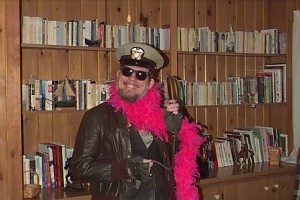
What a fashion plate!
#1-The Amazing Drive-by Nickle Muncher. I’ve had a habit of stopping and ditch mining roadsides since I was a kid. When Sara and Lisa were small, we’d stop on straight stretches, usually right after the snow melted and pick up returnable cans and bottles. The money helped pay for their college educations. This invention functions like a magnet, pulling all cans and bottles from the roadsides as you drive past, depositing them in the back of your pick-up truck. Fancier models grab water when you pass a stream or lake to give the haul a pre-wash. I figure it would pay for itself in a very short time.
#2-The even more amazing coin and jewelry sucker. I’m on my second metal detector, a fairly high end Garrett, but have yet to find anything of real value. I’d love to have something like the Nickle Muncher that could grab all coins and jewelry on or under the ground within 200 feet of a roadway. Imagine how cool it would be to spend a day tooling along back roads while listening to a new book on CD, then opening up your trunk or a chest in the bed of your truck to see what treasures you’s uncovered.
#3-This is inspired by sister Kate’s lament about cart pigs. We’ve all seen them, the perfectly able slob who is so blasted important they can’t be bothered to return a shopping cart or even put it in one of the racks so store employees can bring them back to the store. I swear Walmart attracts them like cow pies draw flies. The No-Ya-Don’t allows one to point a small wand-like device and turn the offender’s about to be ditched cart into a super rolling charge of static electricity. The miscreant ends up with stinging hands and on their butt, preferably in a mud puddle. After a couple times, even the biggest dullard sloth will figure out that returning a cart isn’t rocket science.
#4-Say Bye-Bye Cellphone. I don’t own one, don’t like them and can’t imagine ever desiring one. In fact, I really don’t like using phones in general. I know there was a time when supposedly intelligent homo sapiens were capable of going to stores without a piece of technology that gets whipped out so their significant other can be consulted as to which type of bran cereal must be purchased. This invention allows one to send a two part signal to any cellphone deemed annoying. Part one has the device announce very loudly “I apologize for the annoyance my owner has caused. The second melts the circuitry. This one would be particularly satisfying on the highway.
#5-Captain Wambu’s Road Rage Alternative. Speaking of highways, I bet you know someone who gets batshit crazy as a result of other drivers’ inability to act civilized when behind the wheel. I have the perfect invention. Again, it has two parts. Part one sends your voice into their vehicle where you say something like, I hope what follows will assist you in becoming a more responsible member of society (PG version…Use your imagination for other rated versions). This is followed immediately by an electronic circuit adjustment to their engine that limits speed to 45 miles an hour for the next 60 minutes. We’re wotking on au update that belches huge clouds of black smoke from the exhaust system.
#6-The Neural Nourisher. I admit it. I’m a readaholic and can’t go through a single day without discovering at least one book I gotta read. The fact is it’s impossible to read all of them, hence this invention. A small implant goes under your scalp and connects to the portion of your brain where dreaming happens. It includes a wireless connection so your computer or ebook reader can link up. On nights when you so desire, you pull up something from your TBR list and as you sleep, you read the book. End result: Double the number of books read and no nightmares (unless you’re into horror).
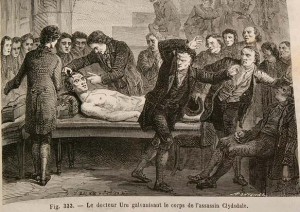
Longing for the days before all that ethical experimentation foolishness.
#7-The Amazing Frederico. This is sorta the reverse of #6. It’s a similar neural implant, but this records your dreams in digital format so you can watch/edit/save them. I figure it could spawn an entire alternative to Youtube as well as help people make sense out of those straggly fragments that bounce about right after they get up.
#8-Light ‘N Flat. This will be especially popular with Maine folks. Imagine a truck that has a row of adjustable intensity lasers as wide as one lane of traffic. They heat cracked and broken pavement until it’s malleable. Just behind the laser line is a water filled roller to pack and even the newly heated pavement. Since they could run these at night when there’s less traffic, long stretches of damaged road could be rehabbed quickly and at a substantial savings to cash strapped rural areas.

Some ideas are hotter than others
#9-The Michael Moorecrobe. There are experimental iterations of this already out there, but mine’s classier and safer as well as lucrative. It’s a genetically modified bacteria strain that LOVES toxic waste and hazardous/difficult to recycle trash. The nastier the substance, the happier these little critters are. Have spent fuel rods…Yum, they’ll eat ’em and poop something like platinum or palladium. Dioxin or DDT, “No Problemo, heap my plate!” they’ll exclaim. Best of all when they consume all the bad stuff in one spot, they go dormant until released at another hazardous area and they can switch dietary preferences on the fly. What’s not to like? A Toxic Politico strain is currently in rapid development.
#10-The Backatcha App. I suspect everyone will want one and Intel should develop it simply for the repeat order potential. Download this to your computer and every time you’re spammed, the program sends a response capable of cutting through all the forged headers. When it reaches the origination source, it fries the hard drive and motherboard. Spamming becomes very expensive.
I have more, but these are some of the more interesting ones. I’d love to hear about some of yours.
March 25, 2016
Weekend Update: March 26-27, 2016
 Next week at Maine Crime Writers there will be posts by John Clark (Monday), Jessie Crockett (Tuesday), special guest Peter Murray (Wednesday), a special group post (Thursday), and Maureen Milliken (Friday).
Next week at Maine Crime Writers there will be posts by John Clark (Monday), Jessie Crockett (Tuesday), special guest Peter Murray (Wednesday), a special group post (Thursday), and Maureen Milliken (Friday).
In the news department, here’s what’s happening with some of us who blog regularly at Maine Crime Writers:
from Kaitlyn Dunnett/Kathy Lynn Emerson: A busy stretch coming up. On the evening of April 4, I’ll be on a Sisters in Crime panel at Storrs Library in Longmeadow, MA with fellow mystery writers Susannah Hardy/Sadie Hartwell and Sharon Healy-Yang. For more information click here: longmeadowlibrary.org
Then there’s Maine Crime Wave coming up on April 8-9. You’ve seen these links before, but here they are again.
+ MAINE CRIME WAVE http://mainewriters.org/2016-maine-crime-wave/
+ SCHEDULE http://mainewriters.dreamhosters.com/?page_id=3223
+ PANELISTS & WORKSHOP LEADERS http://mainewriters.org/panelists-workshop-leaders/ + REGISTRATION DUE April 5, 2016
+ TWO MINUTES IN THE SLAMMER Open Mic Reading Friday, April 8
And, finally, at 1PM on April 14, Maureen Milliken, Janet Morgan and I will be fellow panelists at Lithgow Library in August, ME. I’ll post more details about that appearance closer to the date.
An invitation to readers of this blog: Do you have news relating to Maine, Crime, or Writing? We’d love to hear from you. Just comment below to share.
And a reminder: If your library, school, or organization is looking for a speaker, we are often available to talk about the writing process, research, where we get our ideas, and other mysteries of the business. Contact Kate Flora: mailto: kateflora@gmail.com
March 24, 2016
I’m Just A Girl Who Can’t Say No
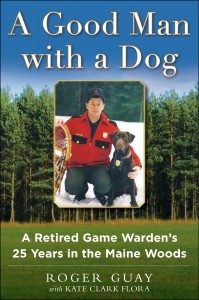 Kate Flora: Lest you get the impression that I am on vacation in Florida this month, I thought I’d share some of my poolside reading. There’s In Defense of Self and Others: Issues, Facts & Fallacies – The Realities of Law Enforcement’s Use of Deadly Force. There’s Into the Kill Zone: A Cop’s Eye View of Deadly Force. I’ve read the report of the president’s task force on 21st century policing, and the report of the International Association of Chiefs of Police on police-community relations. I have a stack of folders several inches high with interviews with police officers, and I have dozens of articles on the use of deadly force and on police officer training. For recreation, I’ve been sneaking away from all that to read the grand jury transcripts in the Darren Wilson/Michael Brown case.
Kate Flora: Lest you get the impression that I am on vacation in Florida this month, I thought I’d share some of my poolside reading. There’s In Defense of Self and Others: Issues, Facts & Fallacies – The Realities of Law Enforcement’s Use of Deadly Force. There’s Into the Kill Zone: A Cop’s Eye View of Deadly Force. I’ve read the report of the president’s task force on 21st century policing, and the report of the International Association of Chiefs of Police on police-community relations. I have a stack of folders several inches high with interviews with police officers, and I have dozens of articles on the use of deadly force and on police officer training. For recreation, I’ve been sneaking away from all that to read the grand jury transcripts in the Darren Wilson/Michael Brown case.
You may well ask: Why?
And as a storyteller, I’ll launch into the tale. It all began many years ago when my New York publisher decided to drop my Thea Kozak series. As I flailed and floundered about, trying to figure out what to do next, I realized that learning to write about crime had necessarily meant I had to learn about the police. So in an impulsive moment, I decided to start a new series—a police procedural series—and set it in Portland, Maine. At the time, the decision seemed reasonable. I liked writing series characters and I was interested in the police. Little did I know how convoluted the path would get.
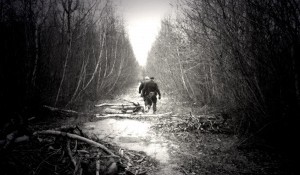
Wardens walking down the tote road to search for Amy.
Some e-mails and phone calls got me a contact in the Portland police department. Cool, I thought, I’ve got an informant who can answer my police-related questions. Little did I imagine that I would end up answering his writing-related questions. Even less did I imagine that while he was informing me about how the police worked, he would be involved in investigating a tragic homicide and want to write a book about it. Pretty soon my little bit of help became quite a lot of help, which morphed into a collaboration with Acting Chief Joe Loughlin and the powerful true crime book that became Finding Amy.
Then the road took another twist. Even as I was vowing never to touch nonfiction again, Maine Warden Service Lt. Pat Dorian, who organized the search that found Amy’s body, (and who, by the way, walks on water), told me about another case I might find interesting. Breaking my vow to never touch true crime again, I asked him some questions, found the answers fascinating, and soon was on the road to Miramichi, New Brunswick. Five years, two trials, and several appeals later, David Tanasichuk’s conviction for the murder of his wife Maria was finally final—and I had another true crime book under my belt, Death Dealer: How Cops and Cadaver Dogs Brought a Killer to Justice. (I also got to go the range when they requalified, go on a stake out where I spotted the bad guy, and drive a four-wheeler into the Canadian woods to see the gravesite.) I also developed a deep, and lasting, affection for the officers involved in the investigation.
But I had had enough of the real world. Fiction was calling. I was on deadline to write another Thea Kozak mystery. I wanted to spend more time with my fictional detective, Joe Burgess, and his team. And then, of course, the phone rang. Roger Guay, a recently retired Maine game warden said he liked the way I’d written Finding Amy. He’d always heard that he told good stories and should write them down, but he didn’t know how. Could I help?
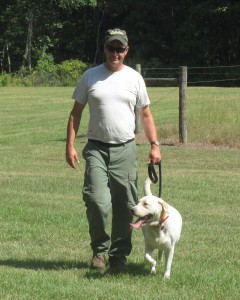
Roger Guay and Saba
Another three years have passed. I’ve had the adventure of doing my interviews in a pickup truck while traveling the back roads around Greenville, Maine. I’ve gotten to follow Maine wardens through tick-filled woods and fields while I watched them train their K9s. I’ve been lost—and found. I’ve struggled to figure out how to translate what I know about writing fiction and true crime into helping Roger write his memoir. I’ve watched the story go from cute animal tales and wily ways of catching fish and game poachers to the tragedy of those who have died in the woods. I’ve watched a man’s resilience and optimism get battered by tragedy and the chaos and FEMA screw-ups in New Orleans after Katrina. I’ve learned about the incredible bond between a handler and his K9. I’ve learned something about how to write memoir.
You can listen to us here: “Missing Persons/Homicide Investigations and Body Recovery/Cadaver Dogs”
http://itsacrime.podomatic.com/entry/2012-04-14T21_02_51-07_00
What I obviously haven’t yet learned is how to say no. So now, as Roger’s wonderful stories and deeply personal narrative are about to appear in A Good Man with a Dog, I’m back at my desk, trying to help Joe Loughlin again. This time, the project is bringing the public inside the realities of officer-involved shootings, the work-in-progress tentatively titled: Shoot, Shoot, Shoot! The Myths, Misconceptions, and Misunderstandings about Officer-involved Shootings.
Of course I’m already saying: Never again. Don’t call me up and say you’ve got a story to tell and ask if I can help.
And of course, there’s already another cop out there with a story to tell who may need my help. And I just know, that now that Roger Guay is a P.I., that there has to be a sequel to Good Man called Backwoods Private Eye.
I know that not saying “no” brings me amazing friends and powerful insights. It lets me use what I know to help people tell important stories. I also know that probably, the next time the call comes, I’ll be saying yes again.
March 23, 2016
How to read a mystery novel
By Maureen Milliken
One of the surprising things I’ve found since my first mystery novel was published last year is that there are people who don’t read mysteries.
I guess it shouldn’t surprise me. There are genres I don’t read. But I was surprised anyway.
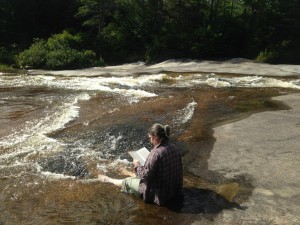
I remember exactly what I was reading here, Kate Atkinson’s “Emotionally Weird.” When you can’t put a book down, you can’t put it down.
I’ve been reading mystery novels as long as I’ve been reading books, so it never occurred to me that some of the things about mysteries that those of us who read and write them take for granted come as surprises to those who don’t.
As I finish up the second book in the Bernie O’Dea mystery series, No News is Bad News, some of the comments from non-mystery readers who have read the first, Cold Hard News, remind me of the elements that we take for granted in mysteries. I’d like to add, that all of these non-mystery readers were gracious. They all said they enjoyed the book, so I’m hoping they are converts.
For those yet to see the light, though, I’ve put together this tip sheet.
CHARACTERS
I know. Every book has them. But their special role in a mystery novel is all-important. There will be at least one character, maybe more, who you care about enough that when they face danger (yes, they will, it’s a given), you get nervous and shaky. I love characters and they’re the most important thing to me in any book I read or write. Characters are plot. Why people do what they do is behind every good mystery.
INFERENCE GAPS
Ugh. I know! Back to college English class. I wish the term was catchier, but what this means is that there’s information that won’t be given to you right away. Things will be hinted at or referred to and you’ll wonder what it means. Don’t get frustrated and think the writer is leaving things out. Later, things may happen, both little and big, that will help fill in the gap. Oh! That’s why he said he’d never go to Rumford again! If the writer lays every detail out for you from the beginning, there’s really no reason to keep reading. You want to be curious enough about things that you’ll turn that page. The only exception to this is in a series, when things that happened in previous books are referred to. That may throw you off if you’re not starting with the first book, but hopefully it will intrigue you, too. No News is Bad News starts a few months after Cold Hard News ended. It’d be nuts for some of the people in the book not to be affected by what happened. They keep saying they’ve moved on, but they haven’t and it shows. Readers of mystery series are used to this, but you may not be. Solution? Go back and read the previous books!
I’ve always loved this term. At least three people who read Cold Hard News remarked that they liked the fact there were clues that made them think someone else was the bad guy, or they were led for a while to believe a different motive. Red herrings! False clues. People who you think are the murderer, but turn out not to be. If you really want a full plate of red herring, I recommend Dorothy L. Sayers’ The Five Red Herrings. It’s got a train schedule time-table plot that I never could untangle, but the red herrings are delicious.
QUESTIONS THAT NEED ANSWERING
Why is he acting like that? What did she take from the cupboard when Rupert left the room? Who killed that guy, anyway? Why? Things will happen and they won’t immediately be explained. This is different from the inference gap. These are BIG questions. I’m not a plot person. When I read a mystery, I let the plot wash over me. If I figure it out before the end of the book, the writer didn’t work hard enough. I’ve probably read Sayers’ Murder Must Advertise seven or eight times, and I’m still not exactly sure how the plot does what it does. It’s not her, it’s me. I love it anyway. There’s one part involving an advertisement in a newspaper that could be interpreted as a double entendre, so someone at the advertising agency changes it, unwittingly throwing off the bad guys’ whole scheme. Like the red herrings, it’s delicious.
QUESTIONS ANSWERED
There’s something most writers — the good ones anyway — do that’s called playing fair with the reader. That’s you! This means that there must be enough clues salted through the book that the average reader has a shot at figuring things out. The murderer, in other words, can’t be the uncle from Pittsburgh who’s been living at a downtown hotel killing off his family and the reader never sees or hears about him until the last page.
Yeah, there’ll be some coincidences. Some crazy ones. It’s how mysteries roll. Unlike real life, the mystery has to get solved, and sometimes you need one or two good coincidences to tie things together. The best writers keep them to a minimum and there’s an unwritten rule that big ones that solve the crime are a no-no. The better the writer, the more the rule can be broken. For instance, Kate Atkinson’s books are loaded with coincidences and they are wonderful and fantastic. I recommend any of the Jackson Brodie series. My favorite is. When Will There be Good News? A title I’d steal if she didn’t already have it. I also love Stared Early, Took My Dog. Not just for the great titles, but for the books themselves. I would marry those books if that were a thing. They’re not really plot-heavy, they’re character heavy. Good characters and what they do are what make the best plots.
‘THREE TIMES WE’VE CROSSED PATHS, MR. BOND’
While characters are important, there shouldn’t be any who don’t play a role in the book whether it’s plot, character development, tone. Extraneous characters are a distraction. They’re not red herrings (otherwise they’d have a plot role), they’re not inference gap tools (otherwise they’d turn out not to be extraneous). A friend of mine calls it the Goldfinger rule (I don’t know if he coined it or someone else did, but it’s genius.) From the James Bond movie Goldfinger: “Three times we’ve crossed paths, Mr. Bond. Once is happenstance, twice is coincidence, but three times is enemy action.” In mystery writing, it establishes the person. I like my friend’s rule so much I’m going to write a whole separate blog post about it soon. But for now, I’ll say that every character in the book should mean something. In No News is Bad News I didn’t bring back some favorites from Cold Hard News because they didn’t have a role to play and there was no point in trotting them across the stage just so the audience could applaud with recognition. “Oh look! There’s Bev Dulac!” Then, 200 pages later, “Hey, what happened to Bev? She was there on page 27 and we haven’t seen her since.”
DANGER! DANGER!
You will like a character. That character will be put in jeopardy. If it’s a series and he or she is the protagonist, it’ll all end up okay (most of the time). You’ll be worried anyway, because that’s the fun of the mystery novel. This will happen, in a series, more to this beloved protagonist than will happen to the entire population of an average American city in a lifetime. A normal person would be dead or in a rubber room. But the plucky protagonist will keep bouncing along and you will accept it because you are reading a mystery series.
YOU WILL PAY ATTENTION
This is important with any book, but this blog post is about mysteries. I’ve had people email me or accost me in parking lots (it’s true!) wanting to argue plot points. I know I’ve ready my book a gazillion times and most others have already read them once. But most of their questions are answered in the book, they just missed it. Don’t speed read it, dear reader. Don’t surf your phone with one hand and read with the other. If the writer is going to make sure she adheres to the Goldfinger rule, the least you can do is pay attention. I don’t mean to sound snarky, I’m just asking you to hold up your end of the deal.
LACK OF SLEEP
You will vow before you go to bed to just read one chapter. Then you’ll look at the clock and it’s 3 a.m. and you’ve read 15 chapters because you just had to find out what was going to happen next.
And that, dear reader, is all you really need to know.
Maureen Milliken is the author of Cold Hard News, the first in the Bernie O’Dea mystery series. No News is Bad News is due out this summer. Follow Maureen on Twitter at @mmilliken47. Like her Facebook page Maureen Milliken mysteries. Sign up for email updates at her website maureenmilliken.com.
Lea Wait's Blog
- Lea Wait's profile
- 509 followers





